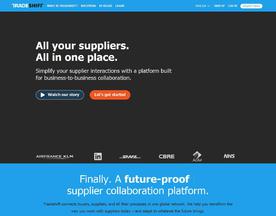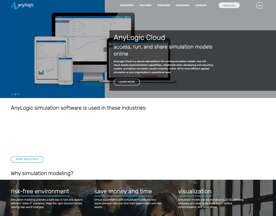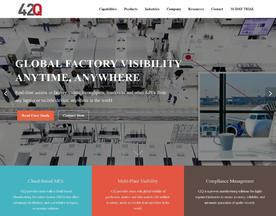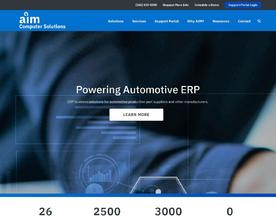Supply chain optimization is a crucial aspect of modern business operations. It involves streamlining the flow of goods and services from the point of origin to the point of consumption, while minimizing costs and maximizing efficiency. Supply chain optimization is a complex process that requires careful planning, forecasting, inventory management, procurement, production, logistics, and performance measurement.

At its core, supply chain optimization is about finding the most efficient and effective way to move goods and services from suppliers to customers. This involves identifying the key players in the supply chain, mapping out their roles and responsibilities, and determining the most efficient ways to move products from one stage to the next. It also involves analyzing data and using predictive analytics to forecast demand, plan production, and manage inventory levels.
Key Takeaways
- Supply chain optimization involves streamlining the flow of goods and services while minimizing costs and maximizing efficiency.
- The process includes careful planning, forecasting, inventory management, procurement, production, logistics, and performance measurement.
- Key strategies for supply chain optimization include improving visibility and analytics, reducing costs, and implementing customer-centric and sustainable practices.
Fundamentals of Supply Chain Optimization
Understanding Supply Chains
A supply chain is a network of entities involved in the creation and delivery of a product or service to the end customer. The entities in a supply chain may include suppliers, manufacturers, distributors, retailers, and customers. Effective supply chain management is essential for companies to achieve a competitive advantage in the marketplace.
Understanding the flow of goods and information throughout the supply chain is critical to optimizing its performance. This involves identifying the key processes, activities, and metrics that impact the efficiency and effectiveness of the supply chain.
The Role of Optimization in Supply Chains
Supply chain optimization involves using mathematical models and algorithms to identify the best possible solutions for improving the performance of the supply chain. Optimization can help companies achieve higher levels of efficiency, reduce costs, and improve customer satisfaction.
Optimization can be applied to various aspects of the supply chain, such as inventory management, transportation planning, and production scheduling. By optimizing these processes, companies can reduce lead times, minimize stockouts, and improve on-time delivery performance.
In conclusion, supply chain optimization is a critical component of supply chain management. By understanding the fundamentals of supply chains and the role of optimization, companies can improve the efficiency and performance of their supply chains and gain a competitive advantage in the marketplace.
Planning and Forecasting
Planning and forecasting are crucial components of supply chain optimization. By developing a strategic supply chain plan and utilizing demand forecasting techniques, companies can optimize their production planning, inventory planning, and overall supply chain design.
Strategic Supply Chain Planning
Strategic supply chain planning involves analyzing the company’s overall business objectives, identifying potential risks and opportunities, and developing a plan to optimize the supply chain accordingly. This involves considering factors such as production capacity, inventory levels, and transportation logistics.
One key aspect of strategic supply chain planning is identifying potential disruptions and developing contingency plans to mitigate their impact. This includes developing alternative sourcing options, establishing backup production facilities, and maintaining sufficient inventory levels.
Demand Forecasting Techniques
Demand forecasting is the process of predicting future demand for a company’s products or services. Accurate demand forecasting is critical for effective production planning, inventory management, and overall supply chain optimization.
There are a variety of demand forecasting techniques that companies can utilize, including statistical models, market research, and expert opinion. Statistical models use historical data to predict future demand, while market research involves gathering data on consumer behavior and preferences. Expert opinion involves soliciting input from industry experts and stakeholders.
Regardless of the technique used, it is important to regularly reassess and adjust demand forecasts based on changing market conditions and other factors. This allows companies to maintain optimal inventory levels and production capacity, minimizing waste and maximizing efficiency.
Overall, effective planning and forecasting are essential for optimizing the supply chain and ensuring a company’s long-term success. By utilizing analytics and demand forecasting techniques, companies can make informed decisions and adapt to changing market conditions, maximizing efficiency and profitability.
Inventory Management
Inventory management is a crucial aspect of supply chain optimization, as it directly affects costs and customer satisfaction. Effective inventory management involves balancing inventory levels with demand, ensuring that the right products are available at the right time, and minimizing the costs of warehousing and holding inventory.
Inventory Optimization Strategies
To optimize inventory levels, companies can use a variety of strategies. One common approach is to use demand forecasting to predict future demand, allowing companies to adjust their inventory levels accordingly. Another strategy is to use just-in-time (JIT) inventory management, which involves keeping inventory levels low and only ordering products when they are needed. This can help reduce warehousing costs and minimize the risk of excess inventory.
Companies can also use inventory optimization software to help manage their inventory levels. These tools use algorithms to analyze demand patterns and recommend optimal inventory levels, helping companies reduce costs and improve efficiency.
Inventory Tracking and Replenishment
Effective inventory tracking is essential for ensuring that the right products are available at the right time. Companies can use a variety of tools to track inventory, including barcodes, RFID tags, and GPS tracking. This can help companies quickly identify when inventory levels are running low and ensure that products are replenished in a timely manner.
Automated inventory replenishment systems can also help streamline the inventory management process. These systems use real-time data to automatically reorder products when inventory levels fall below a certain threshold, reducing the risk of stockouts and ensuring that products are always available to customers.
Overall, effective inventory management is a key component of supply chain optimization. By using inventory optimization strategies and effective tracking and replenishment systems, companies can reduce costs, improve efficiency, and ensure that their customers have access to the products they need.
Procurement and Sourcing

Supplier Selection and Management
In supply chain optimization, procurement and sourcing are crucial components that can significantly impact the success of a business. One of the key aspects of procurement and sourcing is supplier selection and management.
Choosing the right suppliers is essential to ensure that a company can obtain high-quality products at a reasonable cost. It is important to evaluate potential suppliers based on factors such as their reputation, experience, financial stability, and ability to meet delivery schedules. Once suppliers are chosen, it is essential to manage them effectively to ensure that they continue to meet the company’s needs.
Effective supplier management involves maintaining good relationships with suppliers, monitoring their performance regularly, and addressing any issues that arise promptly. This ensures that the company can maintain a reliable supply chain and minimize the risk of disruptions.
Sourcing Strategies and Cost Savings
Another critical aspect of procurement and sourcing is developing effective sourcing strategies to minimize costs and improve efficiency. This involves analyzing the company’s needs and identifying opportunities to reduce costs through measures such as consolidating suppliers, negotiating better prices, and optimizing procurement processes.
To achieve cost savings, companies can also consider alternative sourcing strategies such as outsourcing, offshoring, or nearshoring. These strategies can help companies access lower-cost labor and materials, but they also come with risks such as language barriers, cultural differences, and geopolitical instability.
Overall, effective procurement and sourcing strategies are essential for optimizing supply chain performance and achieving cost savings. By selecting and managing suppliers effectively, and developing cost-effective sourcing strategies, companies can minimize risks and maximize efficiency.
Manufacturing and Production

Efficient Manufacturing Processes
Efficient manufacturing processes are essential to optimize the supply chain. The goal is to maximize production output while minimizing manufacturing costs. One way to achieve this is by implementing lean manufacturing principles, which focus on reducing waste and improving efficiency. This can be accomplished through various methods, such as improving equipment maintenance, implementing automation, and optimizing workflows.
Another important aspect of efficient manufacturing processes is quality control. Ensuring that products meet quality standards is crucial to maintaining customer satisfaction and avoiding costly recalls. Quality control can be achieved through various methods, such as statistical process control and Six Sigma methodologies.
Production Planning and Control
Effective production planning and control is another critical component of supply chain optimization. This involves forecasting demand, creating production schedules, and monitoring production output. By accurately forecasting demand, manufacturers can avoid overproduction or underproduction, which can lead to excess inventory or stockouts.
Production planning and control also involves managing the product lifecycle. This includes everything from design and development to production and delivery. By managing the product lifecycle effectively, manufacturers can ensure that products are produced efficiently and cost-effectively, while also meeting customer needs.
Overall, optimizing manufacturing and production processes is essential to achieving supply chain efficiency. By implementing lean manufacturing principles, ensuring quality control, and effectively managing the product lifecycle, manufacturers can improve production output, reduce costs, and ultimately improve customer satisfaction.
Distribution and Logistics

Effective distribution and logistics management is crucial for optimizing the supply chain network. This process involves the movement of goods from the manufacturer to the end consumer, and it is essential to ensure that the right products reach the right place at the right time. In this section, we will discuss two critical aspects of distribution and logistics management: Network Optimization and Transportation Management and Costs.
Network Optimization
Network optimization involves analyzing the supply chain network to identify opportunities to reduce costs and improve efficiency. This process involves evaluating the flow of goods, the location of warehouses, and the transportation routes used. By optimizing the supply chain network, companies can reduce distribution costs and improve customer satisfaction.
One way to optimize the supply chain network is by consolidating warehouses. This involves reducing the number of warehouses used and consolidating inventory into larger facilities. Consolidating warehouses can help reduce distribution costs, improve inventory management, and increase efficiency.
Another way to optimize the supply chain network is by using a hub-and-spoke distribution model. This involves using a central hub to consolidate shipments from multiple suppliers and then distributing them to regional warehouses. This approach can help reduce transportation costs and improve delivery times.
Transportation Management and Costs
Transportation management is a critical component of distribution and logistics management. It involves managing transportation costs, selecting the right transportation modes, and ensuring timely delivery of goods. Effective transportation management can help reduce costs, improve customer satisfaction, and increase efficiency.
One way to manage transportation costs is by using a transportation management system (TMS). A TMS can help companies optimize transportation routes, consolidate shipments, and reduce transportation costs. It can also provide real-time visibility into the transportation process, enabling companies to quickly identify and address any issues that arise.
Another way to manage transportation costs is by selecting the right transportation modes. For example, using rail or ocean freight can be more cost-effective than using air freight for long-distance shipments. By selecting the right transportation modes, companies can reduce transportation costs and improve efficiency.
In conclusion, effective distribution and logistics management is critical for optimizing the supply chain network. By optimizing the supply chain network and managing transportation costs, companies can reduce costs, improve customer satisfaction, and increase efficiency.
Technology in Supply Chain

Technology has been a driving force in the optimization of supply chain management. It has enabled businesses to streamline operations, improve efficiency, and reduce costs. The following subsections explore some of the technologies that are transforming supply chain management.
Leveraging AI and Machine Learning
Artificial intelligence (AI) and machine learning (ML) are revolutionizing the way supply chains operate. They are being used to analyze large amounts of data, identify patterns, and make predictions. This helps businesses to optimize their supply chains by improving forecasting accuracy, reducing lead times, and minimizing inventory levels.
One area where AI and ML are having a significant impact is demand forecasting. By analyzing historical sales data, these technologies can predict future demand with a high degree of accuracy. This enables businesses to optimize inventory levels and reduce the risk of stockouts.
Another area where AI and ML are being used is in logistics optimization. By analyzing data on factors such as transportation costs, lead times, and order volumes, these technologies can help businesses to optimize their logistics networks. This can result in significant cost savings and improved efficiency.
Blockchain and IoT Applications
Blockchain and the Internet of Things (IoT) are also being used to optimize supply chain management. Blockchain is a distributed ledger technology that enables secure, transparent, and tamper-proof transactions. It is being used to improve supply chain transparency and reduce fraud.
One area where blockchain is being used is in supply chain traceability. By using blockchain, businesses can track products from the point of origin to the point of consumption. This enables them to ensure that products are ethically sourced and comply with regulations.
IoT is also being used to optimize supply chain management. By using sensors and other devices, businesses can track the location and condition of products in real-time. This enables them to optimize inventory levels, reduce waste, and improve customer service.
In conclusion, technology is transforming supply chain management. AI and ML are being used to improve forecasting accuracy and logistics optimization, while blockchain and IoT are being used to improve supply chain transparency and traceability. Businesses that embrace these technologies are likely to see significant improvements in their supply chain operations.
Supply Chain Visibility and Analytics

Supply chain visibility and analytics are crucial components of supply chain optimization. They provide businesses with the ability to monitor and analyze their supply chain processes and identify areas for improvement. By leveraging data analytics, businesses can gain insights into their supply chain performance and make data-driven decisions to optimize their operations.
End-to-End Visibility
End-to-end visibility is the ability to track and monitor the movement of goods and services from the point of origin to the point of consumption. This includes tracking inventory levels, monitoring production processes, and tracking the movement of goods through the supply chain. End-to-end visibility provides businesses with a comprehensive view of their supply chain and helps them identify bottlenecks and inefficiencies.
By leveraging end-to-end visibility, businesses can improve their supply chain performance by reducing lead times, optimizing inventory levels, and improving order fulfillment rates. This can help businesses improve customer satisfaction and reduce costs associated with excess inventory and expedited shipping.
Advanced Analytics and Reporting
Advanced analytics and reporting enable businesses to analyze their supply chain data and identify trends and patterns. By leveraging data analytics, businesses can gain insights into their supply chain performance and identify areas for improvement. This includes analyzing key performance indicators (KPIs) such as order fulfillment rates, inventory turnover, and lead times.
By leveraging advanced analytics and reporting, businesses can identify areas for improvement and make data-driven decisions to optimize their supply chain. This can help businesses reduce costs, improve customer satisfaction, and gain a competitive advantage in the marketplace.
In conclusion, supply chain visibility and analytics are critical components of supply chain optimization. By leveraging data analytics and end-to-end visibility, businesses can gain insights into their supply chain performance and make data-driven decisions to optimize their operations. This can help businesses reduce costs, improve customer satisfaction, and gain a competitive advantage in the marketplace.
Performance Measurement and KPIs

In order to optimize the supply chain, it is important to measure and track performance using Key Performance Indicators (KPIs). KPIs are metrics that help to evaluate the success of a supply chain strategy and identify areas for improvement.
Key Performance Indicators
There are several KPIs that can be used to measure supply chain performance. One important KPI is fill rate, which measures the percentage of customer orders that are filled on time and in full. Another important KPI is perfect order rate, which measures the percentage of customer orders that are delivered without any errors or defects.
Other KPIs that can be used to measure supply chain performance include inventory turnover, order cycle time, and delivery lead time. By tracking these KPIs, companies can identify areas for improvement and develop strategies to optimize their supply chain.
Measuring Customer Satisfaction
Customer satisfaction is a key factor in supply chain optimization. Measuring customer satisfaction can help companies identify areas where they need to improve their service and customer experience.
One way to measure customer satisfaction is through surveys and feedback forms. These can be used to gather feedback from customers about their experience with the company’s supply chain. Another way to measure customer satisfaction is through metrics such as Net Promoter Score (NPS), which measures the likelihood that customers will recommend the company to others.
By measuring customer satisfaction and using this feedback to improve their supply chain, companies can improve their overall performance and create a better customer experience.
Challenges and Risks in Supply Chain
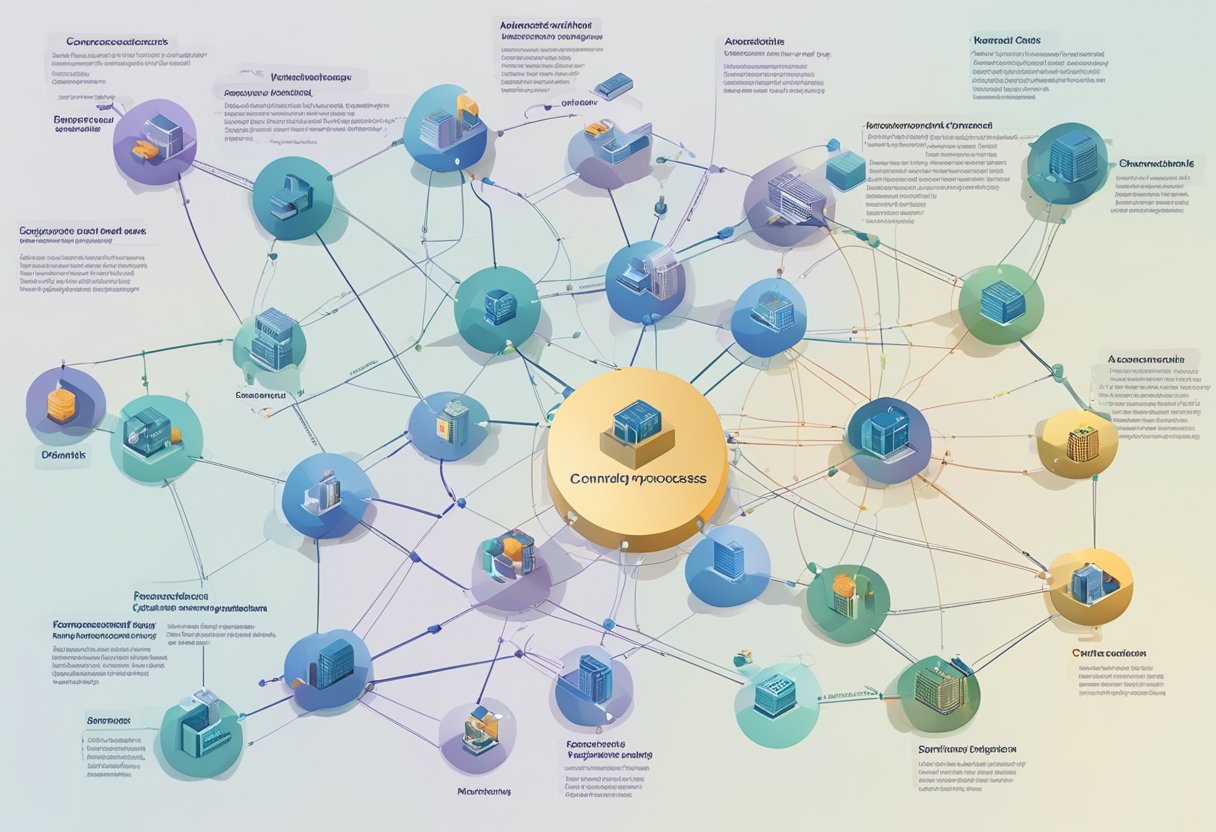
Optimizing supply chain management is not an easy task. There are several challenges and risks that companies face while trying to streamline their supply chain. In this section, we will discuss some of the major challenges and risks that companies face while optimizing their supply chain.
Managing Supply Chain Disruptions
Disruptions in the supply chain can be caused by various factors such as natural disasters, political unrest, or pandemics like COVID-19. These disruptions can lead to delays in deliveries, shortages of raw materials, and increased costs. Companies need to have a contingency plan in place to manage such disruptions.
One way to manage supply chain disruptions is to have a diversified supplier base. This ensures that if one supplier is unable to deliver, the company can rely on other suppliers to meet its demand. Companies can also use technology to monitor their supply chain and identify potential disruptions early on.
Mitigating Risks and Complexity
The supply chain can be complex, especially for companies that deal with a large variety of products and SKUs (Stock Keeping Units). Managing this complexity can be a challenge, and companies need to have a robust risk management plan in place.
One way to mitigate risks is to have a clear understanding of the supply chain and its vulnerabilities. Companies can use data analytics to identify potential risks and take proactive measures to prevent them. They can also collaborate with suppliers and other stakeholders to reduce complexity and streamline the supply chain.
In conclusion, managing the supply chain is a complex and challenging task. Companies need to be proactive in identifying potential risks and disruptions and have a contingency plan in place to manage them. By mitigating risks and reducing complexity, companies can optimize their supply chain and improve their overall performance.
Strategies for Cost Reduction

When it comes to supply chain optimization, reducing costs is a key objective for many companies. By reducing operating and transportation costs, as well as maximizing the gross margin return on inventory investment, companies can improve their bottom line and gain a competitive advantage in the marketplace.
Reducing Operating and Transportation Costs
One of the most effective strategies for reducing costs is to optimize operations and transportation. This can be achieved by implementing lean manufacturing principles, improving inventory management, and reducing waste. By streamlining processes and eliminating unnecessary steps, companies can reduce their total operating expenses and improve their bottom line.
In addition, companies can reduce transportation costs by optimizing their logistics network. This can involve consolidating shipments, using more efficient modes of transportation, and leveraging technology to improve visibility and control over shipments. By reducing transportation costs, companies can improve their gross margin and become more competitive in the marketplace.
Gross Margin Return on Inventory Investment
Another important strategy for cost reduction is to maximize the gross margin return on inventory investment. This can be achieved by improving inventory management practices and reducing the amount of inventory on hand. By optimizing inventory levels and reducing carrying costs, companies can improve their gross margin and reduce their overall operating costs.
To achieve this, companies can use a variety of tools and techniques, such as demand forecasting, safety stock analysis, and inventory optimization software. By leveraging these tools, companies can gain greater visibility into their inventory levels and make more informed decisions about when and how much inventory to order.
In conclusion, reducing costs is a critical component of supply chain optimization. By implementing strategies to reduce operating and transportation costs, as well as maximizing the gross margin return on inventory investment, companies can improve their bottom line and gain a competitive advantage in the marketplace.
Customer-Centric Supply Chain
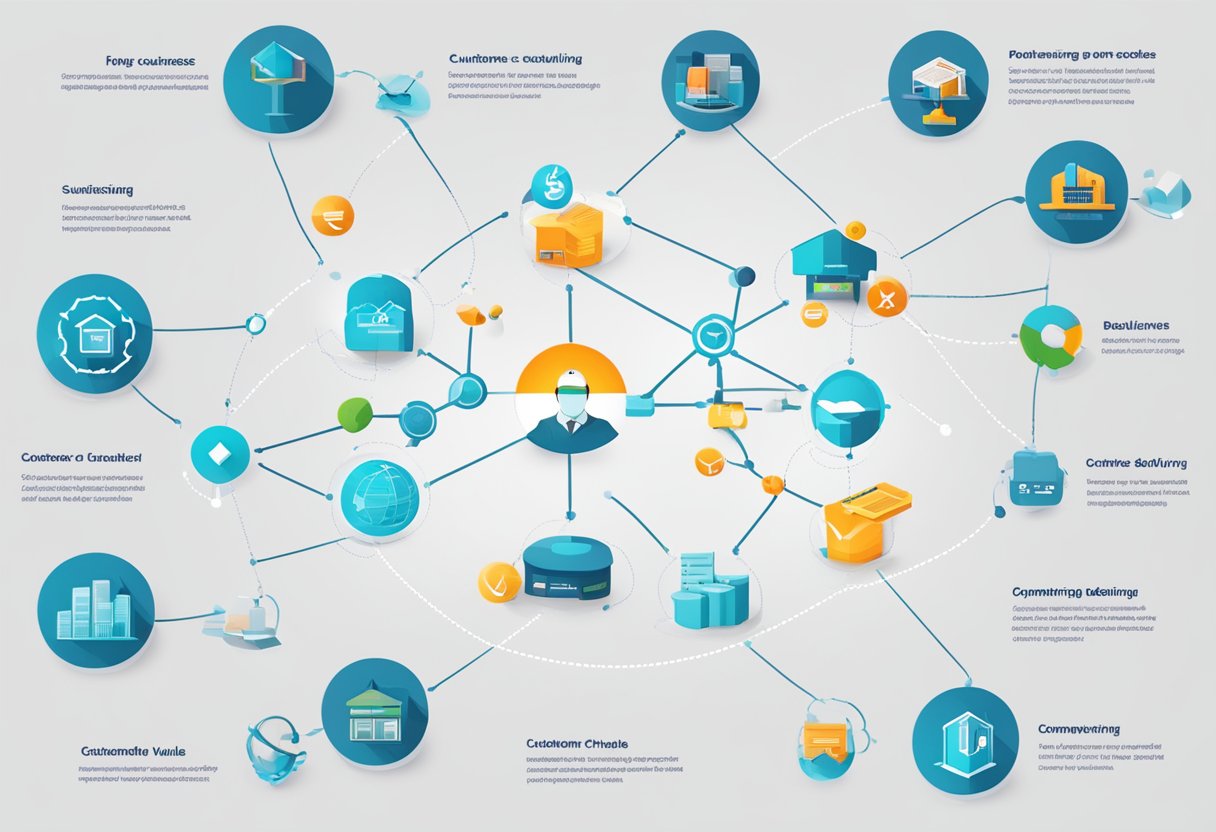
In today’s competitive market, businesses are constantly looking for ways to enhance customer satisfaction and experience. One way to achieve this is by adopting a customer-centric approach to supply chain management.
Enhancing Customer Experience
A customer-centric supply chain focuses on providing a seamless and personalized experience to customers. This means that businesses need to have a deep understanding of their customers’ needs and preferences. By leveraging data analytics and customer feedback, businesses can tailor their supply chain operations to meet the unique needs of each customer.
One way to enhance the customer experience is by offering multiple delivery options. Customers may prefer same-day or next-day delivery, while others may prefer a more cost-effective option. By providing a range of delivery options, businesses can cater to the diverse needs of their customers.
Another way to enhance the customer experience is by providing real-time visibility into the supply chain. Customers want to know the status of their orders and when they can expect delivery. By providing real-time updates, businesses can build trust and loyalty with their customers.
Meeting Customer Expectations
In addition to enhancing the customer experience, a customer-centric supply chain also focuses on meeting customer expectations. This means that businesses need to have a deep understanding of their customers’ expectations and preferences.
One way to meet customer expectations is by ensuring product availability. Customers expect to find the products they want when they want them. By optimizing inventory levels and supply chain operations, businesses can ensure that products are always in stock and readily available.
Another way to meet customer expectations is by providing excellent customer service. Customers expect to be able to reach out to businesses with questions or concerns and receive prompt and helpful responses. By investing in customer service, businesses can build strong relationships with their customers and improve customer satisfaction.
In conclusion, a customer-centric supply chain is essential for businesses looking to enhance customer satisfaction and experience. By focusing on the unique needs and preferences of each customer, businesses can build trust and loyalty and gain a competitive edge in the market.
Sustainability and Agility

Sustainable Supply Chain Practices
Effective supply chain optimization requires a focus on sustainability. Companies that prioritize sustainable practices in their supply chain can reduce their environmental impact and improve their reputation with consumers. This can lead to increased sales and long-term profitability.
Sustainable supply chain practices can include reducing waste, using renewable energy sources, and implementing ethical labor practices. Companies can also work with suppliers who prioritize sustainability and ethical practices.
By implementing sustainable supply chain practices, companies can also reduce their costs. For example, reducing waste can lead to lower disposal costs, while using renewable energy sources can lead to lower energy costs. This can improve a company’s bottom line while also benefiting the environment.
Building an Agile Supply Chain
Agility is another important factor in supply chain optimization. An agile supply chain is one that can quickly adapt to changes in demand, supply, and other factors. This can be especially important in industries where demand can fluctuate rapidly.
Building an agile supply chain requires a focus on flexibility and responsiveness. Companies can achieve this by implementing technologies such as real-time monitoring and predictive analytics. This can help companies quickly identify and respond to changes in demand.
Another key factor in building an agile supply chain is collaboration. Companies can work with suppliers, customers, and other partners to improve communication and coordination. This can help ensure that everyone is on the same page and can quickly respond to changes in the market.
By combining sustainability and agility in their supply chain, companies can improve their bottom line while also benefiting the environment. This can lead to long-term success and profitability.
Implementing Supply Chain Optimization

Successful implementation of supply chain optimization requires careful planning and execution. In this section, we will explore the key steps involved in implementing supply chain optimization.
Execution of Optimization Strategies
Effective execution of optimization strategies is crucial to achieving desired outcomes. Supply chain execution involves managing the flow of goods and services from the point of origin to the point of consumption. This includes order fulfillment, order management, and execution of other processes involved in the supply chain.
To optimize supply chain execution, it is important to identify areas of inefficiency and implement measures to streamline processes. This can involve automation of manual tasks, use of advanced analytics and machine learning algorithms to predict demand and optimize inventory levels, and integration of data from various sources to gain insights into supply chain performance.
Use Cases and Decision Support
To ensure successful implementation of supply chain optimization, it is important to identify relevant use cases and decision support tools. Use cases involve identifying specific scenarios where optimization can be applied to achieve desired outcomes. Decision support tools, on the other hand, involve providing decision makers with the necessary information and tools to make informed decisions.
Examples of use cases include demand forecasting, inventory optimization, and route optimization. Decision support tools can include dashboards, reports, and analytics tools that provide real-time insights into supply chain performance.
In conclusion, successful implementation of supply chain optimization requires careful planning and execution. By focusing on execution of optimization strategies and identifying relevant use cases and decision support tools, organizations can achieve significant improvements in supply chain performance.
Frequently Asked Questions

What are the key components of an effective supply chain optimization strategy?
An effective supply chain optimization strategy involves several key components, including demand forecasting, inventory management, logistics optimization, and supplier relationship management. By optimizing these components, businesses can improve efficiency, reduce costs, and enhance customer satisfaction.
How can businesses measure the success of supply chain optimization?
Businesses can measure the success of their supply chain optimization efforts by tracking key performance indicators (KPIs) such as on-time delivery, inventory turnover, and order accuracy. By analyzing these metrics over time, businesses can identify areas for improvement and adjust their strategies accordingly.
What are common challenges faced during the implementation of supply chain optimization initiatives?
Common challenges during the implementation of supply chain optimization initiatives include resistance to change, lack of buy-in from stakeholders, and difficulty in integrating new technology with existing systems. To overcome these challenges, businesses should communicate the benefits of the new strategy, involve stakeholders in the planning process, and provide adequate training and support.
How does technology impact supply chain optimization efforts?
Technology plays a crucial role in supply chain optimization by enabling real-time tracking and analysis of data, improving communication and collaboration between stakeholders, and automating manual processes. By leveraging technology such as artificial intelligence, machine learning, and the Internet of Things, businesses can gain a competitive edge and achieve greater efficiency in their supply chain operations.
What are the benefits of integrating supply chain optimization in various industries?
Integrating supply chain optimization can benefit various industries by improving efficiency, reducing costs, and enhancing customer satisfaction. For example, in the healthcare industry, supply chain optimization can help ensure timely delivery of critical medical supplies and equipment. In the retail industry, supply chain optimization can help reduce inventory costs and improve the accuracy of order fulfillment.
How can companies ensure continuous improvement in their supply chain optimization processes?
To ensure continuous improvement in their supply chain optimization processes, companies should regularly analyze their performance metrics, solicit feedback from stakeholders, and stay up-to-date with the latest technology and industry trends. By continuously refining their strategies and processes, businesses can maintain a competitive edge and achieve long-term success.



